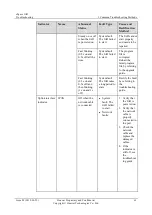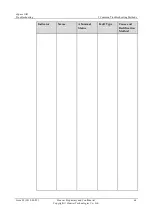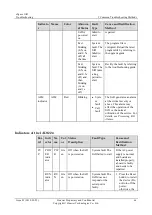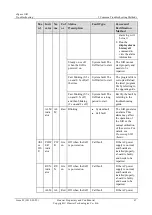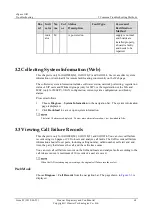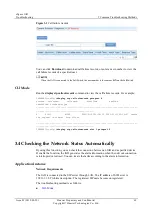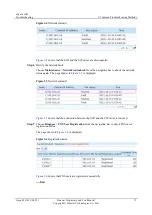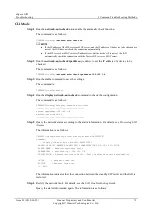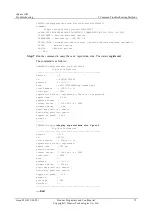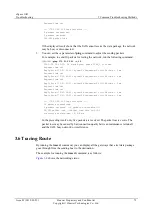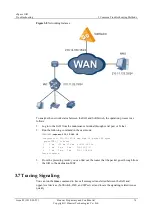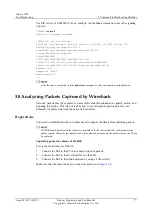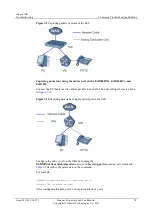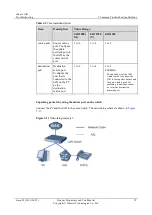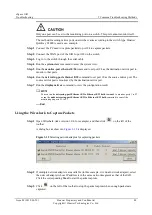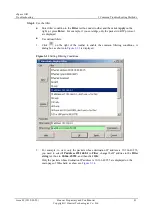
eSpace IAD
Troubleshooting
3 Co mmon Troubleshooting Methods
Issue 02 (2012-02-29)
Huawei Proprietary and Confidential
Copyright © Huawei Technologies Co., Ltd.
77
Use SIP service of IAD132E(T) as an example, run the
trace
command to trace the signaling
of port 0:
TERMINAL#
trace 0
Execution of command succeeded
[2009/10/21 15:16:22 (910ms)]
UA->PROXY: Sip Message is going to be sent to 192.166.1.16:5060 through UDP
REGISTER sip:uap3;user=phone SIP/2.0
From:"8661"<sip:8667@uap3;user=phone>,tag=8f374716
To:<sip:8667@uap3;user=phone>
CSeq:46REGISTER
Call-ID:[email protected]
Via:SIP/2.0/UDP 192.l66.1.132:5060;branch=z9hG4bK<38ba526a7
Contact:<sip:[email protected]:5060;user=phone>;expires=120
Expires: 120
Supported: 100rel
Max-Forwards: 70
...
After the trace is completed, run the
undo trace
command to close the signaling tracing function.
3.8 Analyzing Packets Captured by Wireshark
Network packets must be captured to locate faults about broadband voice quality, media, and
signaling interaction. This topic describes how to use Wireshark (previously known as
Ethereal) to capture data from the network for analysis.
Preparations
You need to establish network environment and configure the data before capturing packets.
If VPN(Virtual Private Network) software is installed on the PC, delete the VPN software before the
packet capture. Otherwise the capture result will be affected because only the packets sent by the PC can
be captured.
Capturing packets by means of the Hub
Set up the environment as follows:
1.
Connect the Hub to the PC that is used to capture packets.
2.
Connect the Hub to the WAN interface of the IAD.
3.
Connect the Hub to the uplink network by using a LAN switch.
Make sure that the three cables are connected, as shown in

